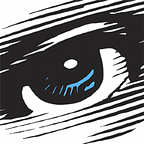The Seven Ups (1973, Dir. Phillip D’Antoni)
Synopsis:
N.Y.P.D. Undercover cop, Buddy Manucci (Roy Scheider) and his crew (known as the Seven Ups because all of their busts lead to criminals going to prison for 7 years or longer) use unconventional and sometimes dubious methods to secure convictions against the sort of criminals (mob bosses, money launderers) who normally evade prosecution. Buddy uses childhood friend, Vito Lucia (Tony Lo Bianco) as his informant and relies on him to tip him off on how to arrest these criminals. However, unbeknownst to Buddy, Vito has hired two dangerous criminals to kidnap and extort money from exactly the type of criminals Buddy is trying to arrest. When the two schemes collide and one of Buddy’s crew is killed, Buddy is determined to track down those responsible, whatever the cost.
We continue our series of posts on underrated “Spin-offs, Sequels and Remakes” with this largely forgotten spin-off to the classic 70s police procedural The French Connection.
On paper, The French Connection seems an unlikely starting point for a series of films: a John Frankenheimer — directed sequel and this spin off by the original film’s producer, Phillip D’Antoni (During the course of writing this post I discovered there’d been another film based on Detective Eddie Egan’s career: Badge 373, released the same year as The Seven Ups, as well as a Tv pilot for a planned series called Popeye Doyle.)
Taking as its source material, journalist Robin Moore’s book on what at the time was the N.Y.P.D.’s biggest single drugs bust in its history, William Friedkin’s now classic 1971 film, fictionalized the story of cops Eddie Egan and Sonny Grosso giving it more drama, more gunplay and, most notably, a car chase to equal that of producer D’Antoni’s previous hit, Bullitt. In doing so, Friedkin launched the careers of himself, Gene Hackman (who won an Oscar for his role as the Egan — inspired Popeye Doyle, along with Best Director for Friedkin, Best Picture, Best Editing and Best Adapted Screenplay.), Roy Scheider and cinematographer, Owen Roizman. The film also kickstarted a whole sub genre of gritty, pseudo — documentary style cop movies which continues to this day — everything from NYPD Blue to Training Day owes a debt to The French Connection.
It’s slightly ironic then, that this follow-up film (based on a real life story from Sonny Grosso) and starring Roy Scheider, who played Grosso’s fictional counterpart in the original film should have been so forgotten, especially as unlike the official sequel: French Connection II, which creates a fictional story of the “Popeye” Doyle character hunting for the ringleader of the original drug gang on his home turf of Marseilles, here the action is again based in New York and has the original’s same sense of both urban decay in its choice of locations and cold, due its wintery mis-en-scene.
As well as Scheider, fans of the original will notice several other familiar faces: Tony Lo Bianco (who played small time villain Sal Boca in the original) plays Scheider’s childhood pal and informant Vito here, as well as stunt coordinator Bill Hickman (who also did the stunt driving on Bullitt and the original film, as well as playing F.B.I Agent Mulderig in the original) who plays Bo, one of the two villains here (as well as being stunt coordinator here as well) and Benny Marino, who played Sal Boca’s brother Lou in the original film also pops up here in a small role as the son of a kidnapped gangster and yes, that is Sonny Grosso himself (who ended up having quite a career in film — as well as this he would also appear in small roles in The Godfather and Friedkin’s Cruising) as one of the criminals at the beginning of the film.
Along with the familiar faces in front of the camera, the presence of original editor Jerry Greenberg and composer Don Ellis (who I recently discovered was, bizarrely, not the first choice here — Point Blank and M.A.S.H composer Johnny Mandel was originally hired and some of his original, unused score has now been collected on a new CD release, along with his scores for M.A.S.H and The Verdict.) add to the feeling of a companion film to the original. Cinematographer Urs Furrer is no Roizman, but he gets close enough to the original’s gritty look that it feels similar.
There’s much to savor here: Scheider is every bit as good as he always is, as is LoBianco who’s given a much more interesting character to work with here than Sal Boca. Richard Lynch is also superb as the twitchy, psychotic Moon. The almost obligatory car chase is, if anything, superior to either that of the original (for which Roizman undercranked the camera to 18fps to give the illusion that the car is traveling faster than it is, which always rather spoilt the chase for me — there’s none of that here) or even Bullitt. Far more prolonged and technically accomplished it also ends with a truly spectacular stunt, which was Hickman’s tribute to Jayne Mansfield’s fatal accident when Scheider’s character is nearly decapitated after his car crashes into a stationary truck, which almost takes off its entire roof. All of which adds up to a film that if you’re a fan of the original movie, makes not also having this film as part of your collection almost a crime.
We‘ll be looking at another of Scheider’s great performances next time, when we conclude this short series on Spin-offs, Sequels and Remakes with a post about William Friedkin’s Sorcerer.
